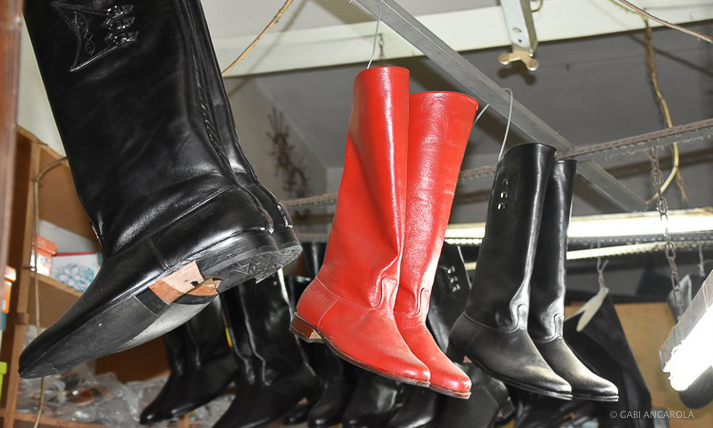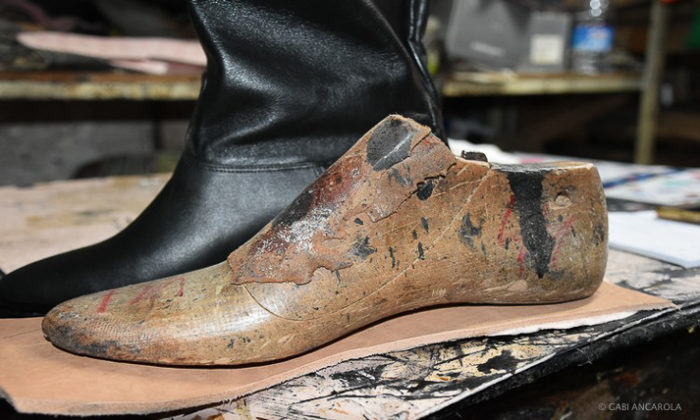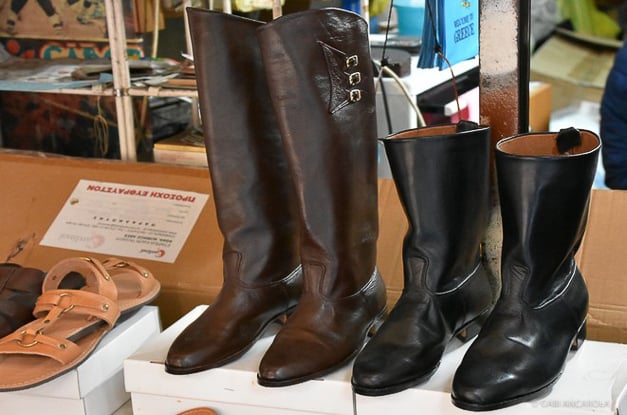The Greek island of Crete has undergone recurrent conquests and occupations over the centuries. Other than the best-known civilizations ruling the island, such as Venetians and Ottomans, from 820 until 961, at one point Crete was also an emirate. While the rest of the conquerors left visual traces on the island through monasteries, walls or minarets, the Saracens left behind a handful of traditions that are still part of the Cretan life. Among them are, the consumption of coffee, (heavy) smoking, the utilization of spices, and the skills of working with leather.
Skridlof street, best known as Stivanadika, is in the center of Chania. It is here, where almost a century ago, that special craft that the locals inherited from the Arabs took the form of belts, bags, and shoes. Today, a strong smell of leather still lingers along this pedestrian only street; attracting large crowds of tourists.
In winter, however, only a few of these shops remain open. These shops have been selling leather boots on this street for decades.
Back in the day, in fact, the street was known as the street of the στιβανάδων (stivanadon – the Stivania); who were the makers of the Cretan boot.
Very little remains from those days now, and Stivanadika has become purely a tourist area, where very little reminds us of its glorious past. Only few of the old bootmakers still have a workshop in Stivanadika.
Mr. Lefteris Pirinakis; who is now 87, arrived in the city when he was ten years old, and soon started learning the craft of boot making in the Old Port of Chania. This was a period of extreme poverty all over Greece. He recalls buying 50 loaves of bread for his family with his first weekly salary.
Years later; using a golden pound coin that his mother gave him, he bought a small shop. Pirinakis was proud of his craft, and he was a passionate bootmaker. His creativity and skills got him plenty of orders for boots and shoes. He would even work all night long to be able to fulfill the requests and also sell to other shops in Chania. Things were not going well for everyone though. Many would buy their shoes in installments.
The seventies marked a turning point for the island when tourism introduced changes in many local industries; injecting a constant flux of foreign tourists that made the businesses expand. Shops on Stivanadika began producing sandals other than boots as well, but foreigners loved the Stivania and would take a pair back home. Sales were up to twenty pairs of boots per day: something that had never been seen before and that would never be seen again.
The current sales of handmade leather boots are limited to the local market of dancers or organizations. A pair of good, customized and handmade leather Cretan boots costs about 130 euros, and prices are low if compared with the number of working hours every pair requires. Stitching Stivania is not only difficult but painful as well, as everything is done by hand.
His little workshop also caters to those Greek-American tourists that visit Crete. Mr. Pirinakis sends boots all over the world, and he proudly gives proof of that showing his book of measures and orders, where he includes the client’s overseas address.
See all the latest news from Greece and the world at Greekreporter.com. Contact our newsroom to report an update or send your story, photos and videos. Follow GR on Google News and subscribe here to our daily email!







